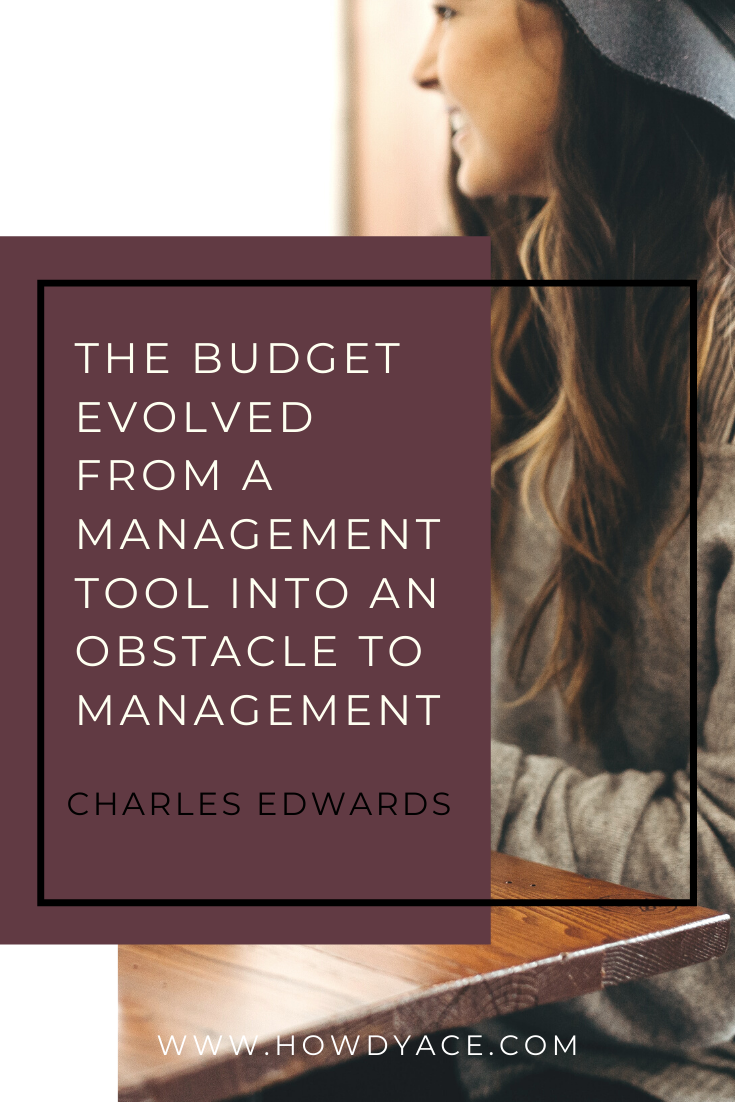Personalized Budget Plan: Budgeting Techniques [Part 3 of 3]
There are so many budgeting techniques that have worked throughout the years. So, it’s no wonder why people are so confused. With so much advice out there, it can get overwhelming.
So many are hesitant to even try one out or easily give up and decide that budgets don’t work.
With this in mind, follow along to learn the basic principles of the most popular budget techniques. As a result, you’ll be more equipped when creating a personalized budget plan that suits you.
The various budgeting techniques are listed in ascending order by the amount of time + energy needed. As you go down the page, typically, the more hands-on you’ll need to be.
At the end of each section, there are several helpful tips to guide you. Also, there is a list of resources for you to dabble around in or dig deeper.
DISCLAIMER: NOT FINANCIAL ADVICE
I have done my best to ensure that HowdyAce.com aims to provide accurate and valuable information on personal finance, but it may not apply directly to your individual situation.
The content on HowdyAce.com is for informational and educational purposes only and should not be understood or construed as professional financial advice.
I am not an attorney, accountant, or financial advisor/planner, nor am I holding myself out to be. The information provided is not a substitute for financial advice from a professional who is aware of the facts and circumstances of your individual situation.
Should you need such advice, HowdyAce recommends that you seek advice from a financial professional before making any serious financial decisions.
Disclaimer: Affiliate Links
HowdyAce blog post contains affiliate links for products that I love and use. If you take action (i.e. make a purchase, subscribe) after clicking one of these links or using my promo code, you will not pay a penny more! As a way to show your love and support for the content I’ve provided, I may earn a small commission for a cold brew that I will be able to enjoy while creating more helpful content for you!
“HowdyAce is a participant in the Amazon Services LLC Associates Program, an affiliate advertising program designed to provide a means for HowdyAce to earn fees by linking to Amazon.com and affiliated sites.”
Prioritized Spending Plan
I learned of this method from a popular personal financial expert, Dave Ramsey. This method requires having a prioritized list of all expenses. With ‘needs’ being at the top and ‘wants’ at the bottom.
To begin, take all the expenses for the month and prioritize them in order of importance. Start at the top and working your way down until every expense is prioritized. For example:
- Rent
- Car payment
- Groceries
- …..
- …..
- …..
- …..
- Weekly Starbucks.
When you get paid, the money needs to be allocated to the first item on the list. Once that is covered, continue to work your way down your prioritized list.
The list is structured to cover the all needs first, helps make adjustments where needed. Also, it keeps us honest with our spending habits.
Prioritized Spending Tips:
- Draw a line: Draw a line where your income reaches zero. Since the money has run out, everything below the line does not get paid.
- Leftover cash: If you are able to cover all expenses, use the remaining amount to good use. Such as building up emergency savings, increasing your retirement account, investing, or a unique experience/vacation.
Prioritized Spending Resources
The Cash Diet
Broke Millennial, by Erin Lowery, is a great resource for beginner budgeters. In fact, it is were I Iearned about the cash diet.
There is only one rule to the cash diet which is everything must be paid in cash. The only exception to the rule is paying for fixed expenses that can only be paid online, such as bills or airline tickets. (I’ll hold you up to the honor system here.)
With the ease and convenience of credit cards, it’s very easy to overspend if we don’t keep a close eye on our statements. Although, paying with cash we experience the emotional and psychological exchange between money.
Therefore, this action alone helps us to become more mindful of our spending habits.
For the cash diet, add up all income for the month and subtract all fixed expenses. I suggest subtracting a percentage of savings as well so that you don’t forget to save. Then, divide the remaining amount into 4 and that is the amount of cash available to spend each week.
Cash Diet Tips
- Create a buffer: If this is your first attempt, create a buffer ~$100-$200. This will prevent the stress of a forgotten or unexpected fixed expense.
- Check-in weekly: Take a few minutes each week to see where you are financially. This simple moment of awareness will help you become more mindful of your spending habits for the week.
- Leave the cash in the bank: It can be risky to hold all your cash on you at one time. Keep your money protected in the bank and withdraw the allocated amount each week.
- Leftover cash: Roll the amount over to the next week or put the amount to good use. Again, good use is up to your discretion but some ideas would be: emergency savings, retirement, investing, or a unique experience/vacation, etc.
Cash Diet Resources:
- Information:
- Apps:
Envelope System
The envelope system is like an upgraded cash diet. All of the same rules apply except we take it a step further. In addition to paying for everything with cash, we divide our weekly spending money between multiple categories.
We focus on the categories that typically tend to bust our budget: groceries/food, entertainment, gas, clothes, eating out, etc. This helps curb spending on discretionary items and creates a healthy boundary for ourselves.
First, decide on which categories to manage. Second, determine what percentage/amount gets allocated out of each paycheck. Then, fill each envelope with the allotted amount each week.
Above all, when paying for an expense, make sure to take it out of the appropriate envelope. It is critical that we DO NOT TAKE from other envelopes. If we run out of cash in one category, we must wait until it is replenished.
Envelope System Tips:
- Traditional vs. Digital vs. Hybrid?: there are pros and cons to each method. For this reason, research and experience which works best for you.
- Buffer/Misc. envelope: when first starting out, having a buffer/miscellaneous envelope will be a huge help. Whenever you take any money out of this envelope, make sure to keep track of the expense in case you need to make adjustments to your budget for the next month.
- Get creative: If you run out of money in one envelope, ask yourself, “What can I do to make it work without stealing from other envelopes?” You are only limited by your imagination, so think outside the box.
Envelope System Resources:
- Apps:
- Mint:
- Free
- YNAB:
- $5 monthly membership. Click my referral code and try YNAB for free for 34 Days.
- Check out this awesome YNAB Quick Start Tutorial for Beginners
- Mvelopes:
- Try for Free, then $6/month
- Mvelopes Plus $19/month
- Mvelopes Complete $59/month
- GoodBudget:
- Perfect option for couples who want to budget together.
- Free!
- GoodBudget Plus $6/month or $50/year.
- Products:
- Envelopes from Amazon:
- Information:
- Mint:
Track Every Penny
Just as the name entails, we track every penny that is spent. The process can be done on Excel, Google Sheets, Apps, or good ole’ fashion pen (or pencil with a good eraser) and paper.
Of course, the key to this is consistency. Figure out how often you need to record your expenses in order to stay consistent with this budget plan.
For some, it will take 10-20 minutes at the end of each day or every other day. While others will need to carve out an hour each week. Determine what works best for you and your lifestyle.
Another suggestion, do not wait to record your expenses bi-weekly or waiting until the end of the month. Due to the fact that it does not allow you to review/adjust your spending as you go. In addition, it can be discouraging to see a huge pile of receipts and putting the task off completely.
Track Every Penny Tips:
- Categorize: Categorize and sub-categorize each expense to notice trends in spending. It helps to reveal habits that we were unaware of or help to distinguish which expense to allocate to other areas
- Stay consistent: If you forget to track one day/week. Don’t sweat it, just pick up where you left off
- Find what works for you: Some may find that creating a Google Sheet or Excel holds them more accountable due to inputting every expense. Credit card users may like the convenience and robustness of apps like Mint (free) or YNAB ($5/month). Experiment and see what works best for you.
- Reflect: Take some time every week to review your daily spending habits. What did you do well? What could use some improvement? Are you on track to reach your goals?
Track Every Penny Resources:
- Apps:
- Mint:
- Free
- YNAB:
- $5 monthly membership. Click my referral code and try YNAB for free for 34 Days.
- Check out this awesome YNAB Quick Start Tutorial for Beginners
- EveryDollar:
- Free
- EveryDollarPlus for $129.99
- Simple:
- A simple budgeting app that is more than a bank account
- Free
- Erin Lowery:
- Book: Broke Millennial
- Website: Broke Millennial
- Mint:
Percentage Budgeting
The previous approaches are great starting points for a new budgeter. With more time, practice, and understanding, you may find yourself needing a less time-intensive and strict budgeting system. For that reason, the percentage budgeting approach may be the solution.
Percentage budgets outline main categories such as fixed expenses, variable expenses, and savings or wants vs. needs.
The after-tax income is allocated by the percentages and you must live within those means.
For example, if you choose 50/30/20. 50% should be spent on needs, 30% on wants, and 20% on savings/debt reduction.
50% of needs would include housing, transportation, food, etc. Everything in that category would need to fit within 50% of after-tax income. It gives you control to decide to live in a better area but walk/bike more or forgo weekly binge drinking.
There are a lot of different budget percentages’ thrown out there. As a result, read through a few and start with what feels right to you.
Percentage Budgeting Tips:
- Different percentage budget: There are so many budget percentage guides that throw out different numbers. See what makes the most sense to you and give it a whirl. Find more information on each in the resources section.
- 50/30/20
- 80/20
- 70/20/10
- 60/20/20
- Use them as guides: multiple things will affect where you stack up against the percentages. Use them as guides to help you figure out where you may need to cut back or save more.
- Distinguish “wants” from “needs:” percentage budgets helps control your budget while giving you flexibility on decision-making. The key is to understand the opportunity cost or positive/negative consequences of each choice.
- Savings: retirement savings should not be included in this percentage, it’s advised to save with post-tax income (taken out before it hits your checking accounts).
- Adjust as you grow: adjust the percentages as you earn more money.
Percentage Budgeting Resources:
- Apps:
- Mint:
- Free
- Simple:
- A simple budgeting app that is more than a bank account
- Free
- Information:
- How to Follow the 50/30/20 Rule by Wealth Simple
- Don’t Like Tracking Expenses? Try the 80/20 Budget by The Balance
- The 70% Rule: How to Afford Spending, Savings, and Investing on ANY Income by Fun, Cheap or Free
- The 60/20/20 Budget Puts Needs Before Wants. Here’s How to Try It by The Penny Hoarder
- Mint:
Zero-Based Budget
A zero-based budget requires us to allocate every dollar to something. Meaning, that we tell each dollar where to go before it is actually spent.
Before you get your paycheck, you already know that $XXXX to housing, $XXX for a babysitter, $XX for Netflix subscription, etc. You know exactly what your expenses are and what they covered. Ideally, they are being paid by last month’s paycheck/income.
If you are able to cover all expenses during the month and have $100 leftover, it is not free money. You must decide where the $100 dollars will go. Otherwise, the money will end up being spent.
It’s advised to make the money work for you and not against you. So assign the $100 to reduce debt, build emergency savings, investing, paying off a house, or growing wealth.
Zero-based budgeting is one of the most effective ways to break the paycheck-to-paycheck cycle, aggressively pay down debt, and hit savings goals.
Zero-Budget Tips:
- Extreme debt payoff: this is one of the most effective systems to pay off debt. “According to surveys we’ve conducted in Financial Peace University classes, people who do a zero-based budget (versus those who don’t) pay off 19% more debt and save 18% more money!” from Dave Ramsey’s Guide to Budgeting
- 4 Rules: simple yet extremely effective
- Rule 1: Give every dollar a job
- Rule 2: Embrace your true expenses
- Rule 3: Roll with the punches
- Rule 4: Age your money
- YNAB: Try it out for free
- Sinking funds: don’t forget to include expenses that don’t occur every month. Including them in your budget helps to systematically save so you are not surprised each time it comes up
- Example: Christmas presents, car registrations + renewals, Annual Amazon Prime membership renewal, etc.
Zero-Budget Resources:
- Apps:
- YNAB:
- $5 monthly membership. Click my referral code and try YNAB for free for 34 Days.
- Check out this awesome YNAB Quick Start Tutorial for Beginners
- Mvelopes:
- Try for Free, then $6/month
- Mvelopes Plus $19/month
- Mvelopes Complete $59/month
- Books:
- Website:
- YNAB:
Wrapping It Up
Finally, no matter which one of the various budget techniques you choose, there will be a learning curve for everyone at the beginning.
With more time and practice, you’ll be able to hone in on your budget and spending habits. Budgeting will get easier and easier with and require less of an effort. But in order to get there, we must start now.
In my next post, learn about 11 successful budgeting tips to get you started. It has plenty of tips for every budget. So, if you haven’t already, subscribe below so that you don’t miss the post!!
[convertkit form=1205270]
Let’s Talk About It:
Which of the various budget techniques has worked for you?
What helped make the budget successful? Apps? Books? Podcasts? Or Blogs?
I’d love to hear your feedback, please leave a comment below!
If you found this information helpful and know someone who could benefit, don’t hesitate to let them know and share this post with them!
Thank you so much for sharing your time and energy with me!










0 Comments